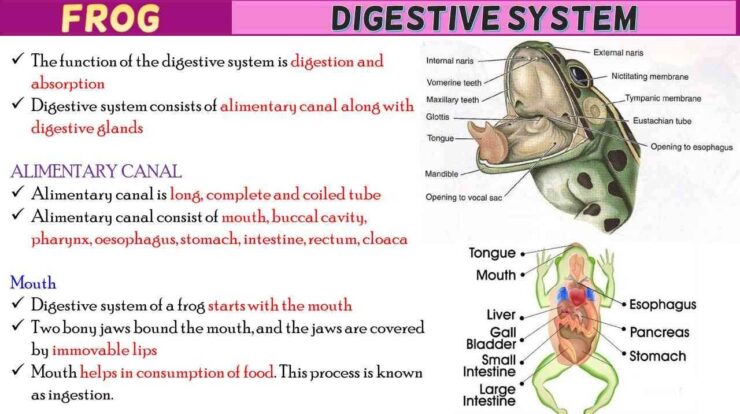

Cystic duct (duct of gall bladder) and hepatic duct combine to form common bile duct which runs through pancreas and joins with pancreatic duct and forms hepatopancreatic duct with opens to duodenum. Bile is temporarily stored at gall bladder through their hepatic ducts. Liver produces digestive juice known as bile which is necessary for digestion of fats. A thin walled, round, greenish sac like structure known as gall bladder is present between the main lobes. So it looks like liver of frog consists 3 lobes. Left lobe is larger then the right one so left lobe is further divided into two parts. These two lobes are connected through the median bridge of liver tissue. Liver consists of two lobes in the body of frog. It is the reddish – brown structure present at the anterior region of the body cavity. Liver of Frog Liver is the largest digestive gland in the body of frog. Lymph lacks few proteins and RBCs and hence is different from blood.Back Practice Set Thirty Three Practice Set One Practice Set Two Practice Set Three Practice Set Four Practice Set Five Practice Set Six Practice Set Seven Practice Set Eight Practice Set Nine Practice Set Ten Practice Set Eleven Practice Set Twelve Practice Set Thirteen Practice Set Fourteen Practice Set Fifteen Practice Set Sixteen Practice Set Seventeen Practice Set Eighteen Practice Set Nineteen Practice Set Twenty Practice Set Twenty One Practice Set Twenty Two Practice Set Twenty Three Practice Set Twenty Four Practice Set Twenty Five Practice Set Twenty Six Practice Set Twenty Seven Practice Set Twenty Eight Practice Set Twenty Nine Practice Set Thirty Practice Set Thirty One Practice Set Thirty Two Practice Set Thirty Four Practice Set Thirty Five Practice Set Thirty Six Practice Set Thirty Seven Practice Set Thirty Eight Practice Set Thirty Nine Practice Set Fourty Practice Set Fourty One Practice Set Fourty Two Practice Set Fourty Three Practice Set Fourty Four Practice Set Fourty Five Practice Set Fourty Six Practice Set Fourty Seven Practice Set Fourty Eight Practice Set Fourty Nine Practice Set Fifty Practice Set Fifty One Practice Set Fifty Two Practice Set Fifty Three Practice Set Fifty Four Practice Set Fifty Five Practice Set Fifty Six Practice Set Fifty Seven Practice Set Fifty Eight Close Menu RBCs are nucleated and contain haemoglobin. RBCs and WBCs and platelets are present in the blood of frogs. The blood is composed of plasma and cells. The renal portal system is a system of special venous connection between the kidneys and the lower parts of the body. The hepatic portal system is a system of special venous connection between liver and intestine. Hepatic portal system and renal portal system are present in frogs. The veins carry blood from all parts of the body to the heart. Arteries and VeinsĪrteries carry blood from the heart to all parts of the body. The ventricle opens into a sac-like conus arteriosus on the ventral side of the heart. Blood from the vena cava reaches the sinus venosus. A triangular structure called sinus venosus joins the right atrium. The heart is covered by a membrane called pericardium. There are three chambers in the heart of frog. The heart is situated in the upper part of the body cavity. The lymphatic system consists of lymph, lymph channels and lymph nodes. The blood vascular system of frog is composed of a heart, blood vessels and blood. Lymphatic system is also present in frogs. The vascular system is closed type and is well developed. The bilobed tongue helps in capturing prey. Digestive enzymes are present in the pancreatic juice.

Liver produces bile and the pancreas produces pancreatic juice. The alimentary canal is composed of buccal cavity, pharynx, oesophagus, stomach, intestine and rectum. The alimentary canal is short because frogs are carnivorous. Sound producing vocal sacs and a copulatory pad (on the first digit of the fore limb) are present in male frogs. The hind limbs are large and more muscular than forelimbs. The forelimbs and hind limbs help in swimming, walking, leaping and burrowing. Ears are represented by membranous tympanum on either side of the eyes. These membranes protect the eyes while the frog is under water. Eyes are bulged and covered by a nictitating membrane. A pair of nostrils is present above the mouth.

The body of a frog is divisible into head and trunk.


 0 kommentar(er)
0 kommentar(er)
